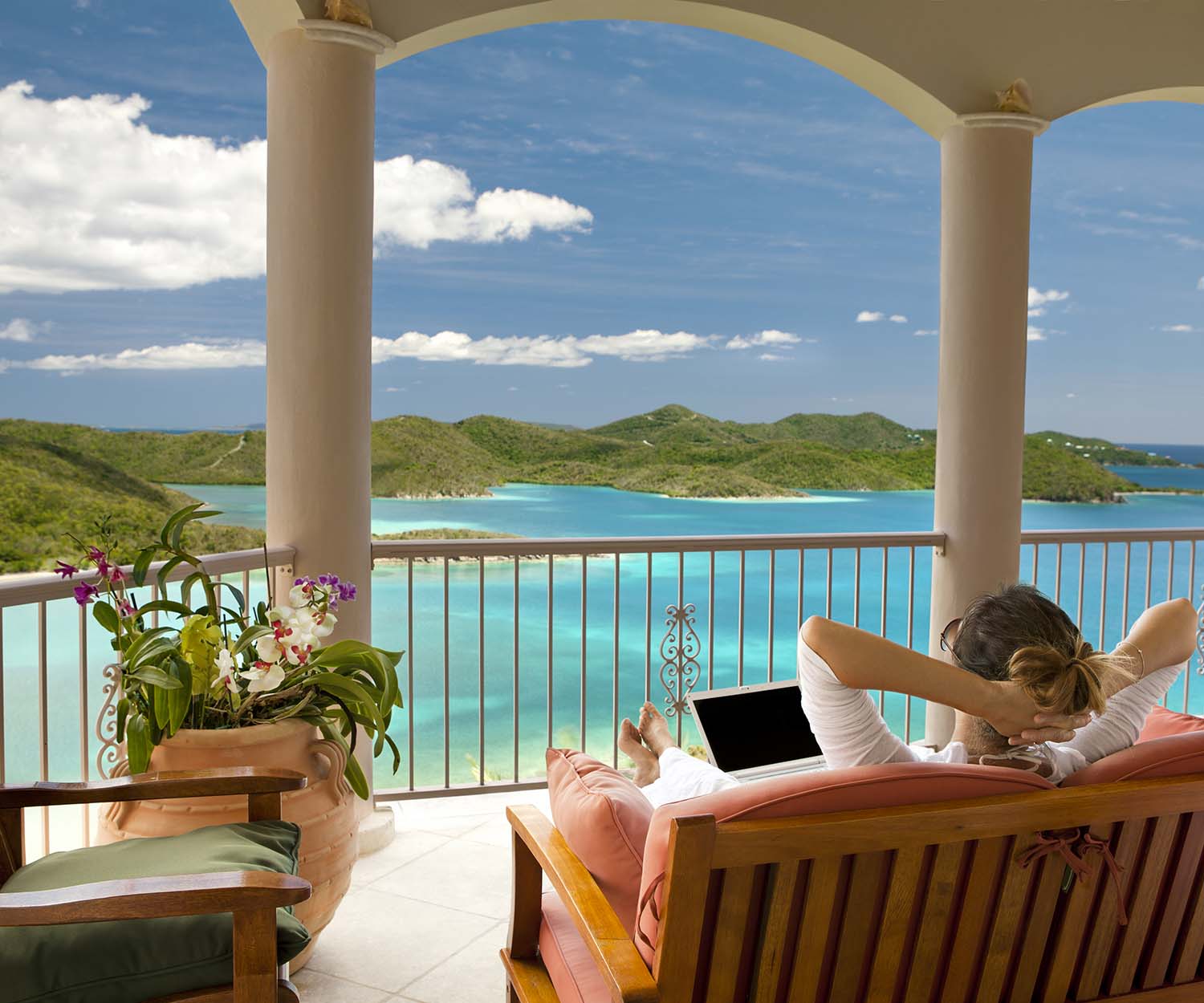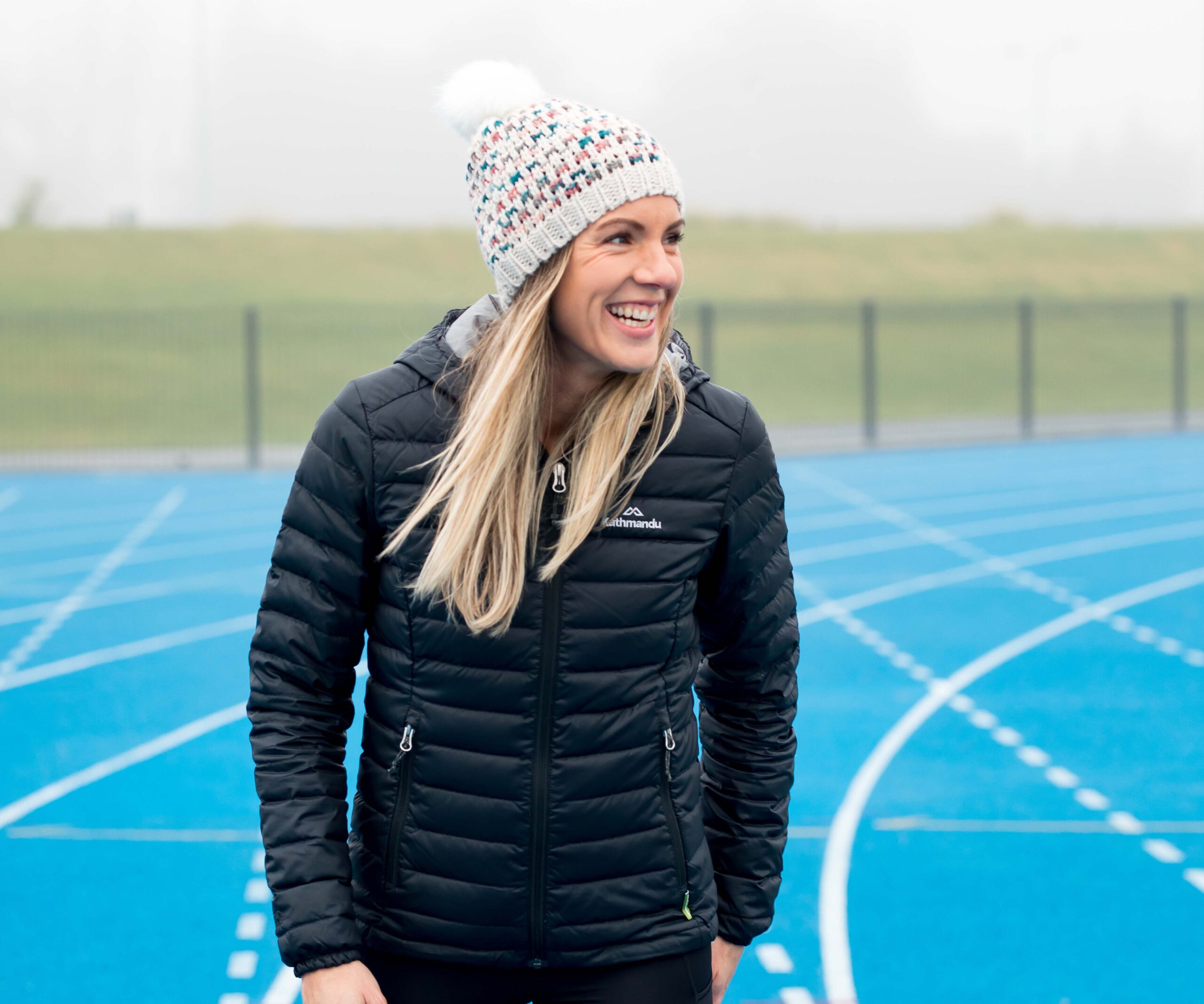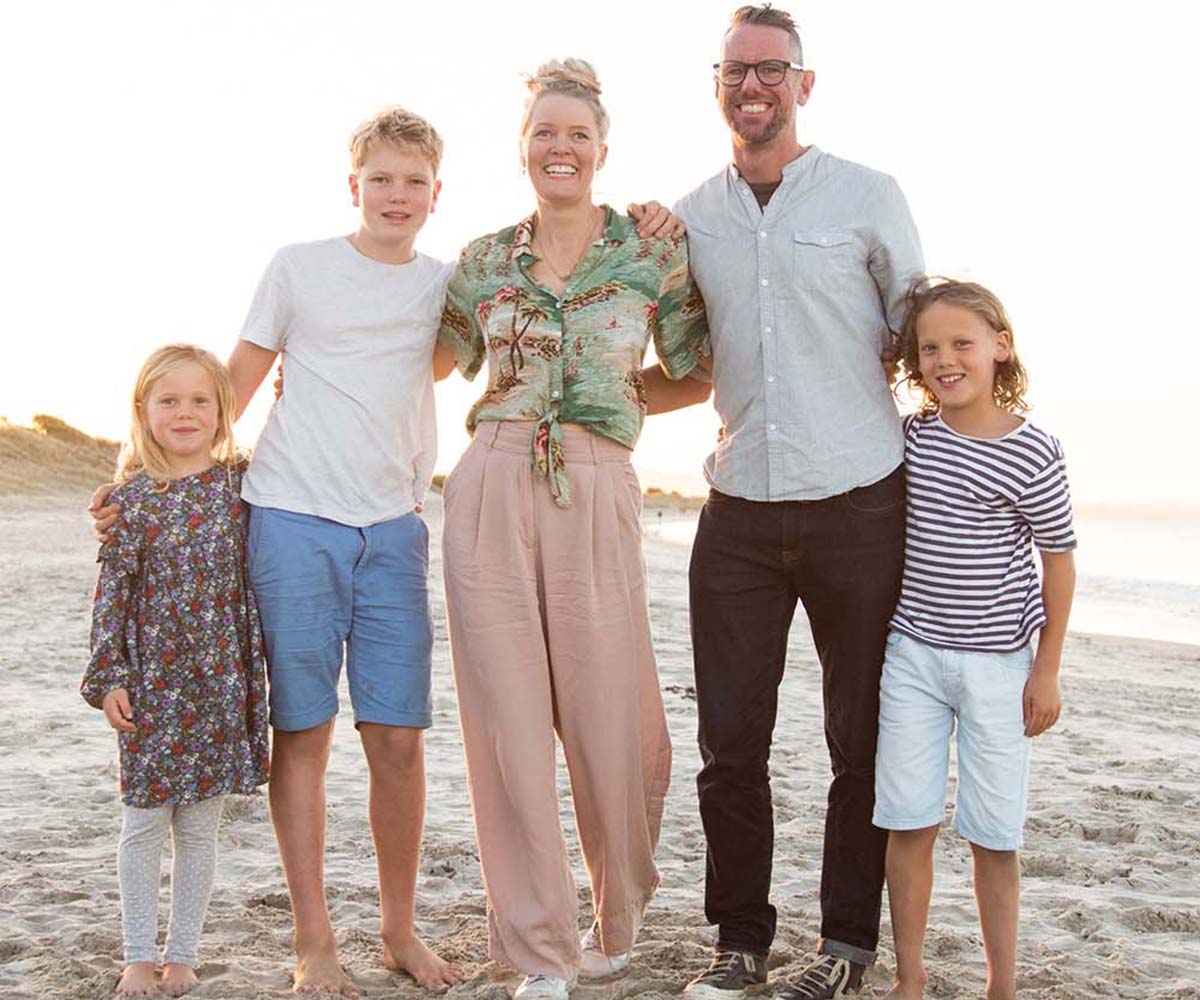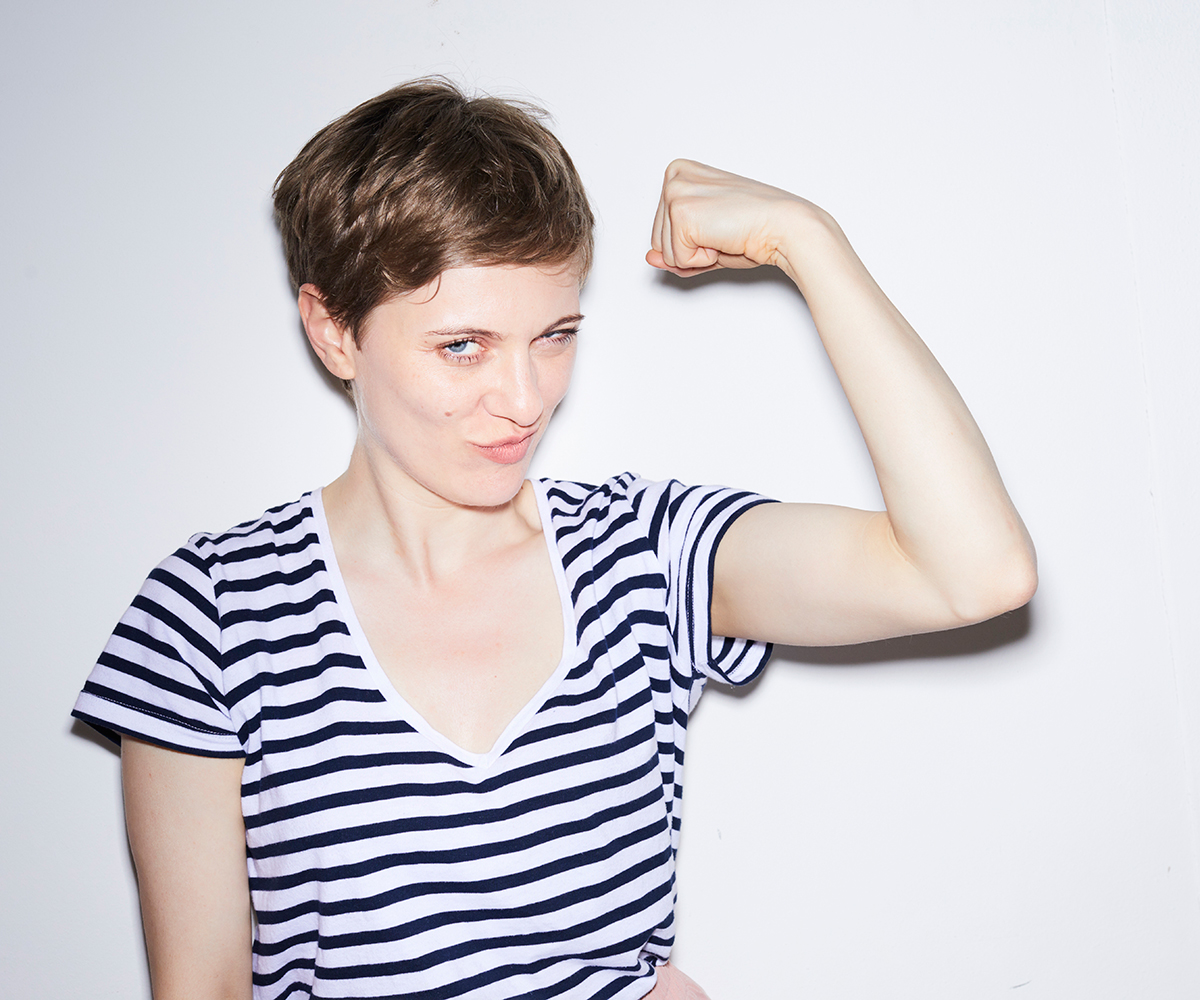Each morning, after her children have left for school, Sam Rodney-Hudson sits in her yurt nestled in bush on Great Barrier Island and switches on her computer. At least twice a day, the mental health nurse attends video conferences with her colleagues, who are scattered in offices around the country. Thanks to a microwave internet cable sitting on a hill opposite her house, which the 43-year-old personally helped install, Sam can do her job from the island she calls home.
She muses that combining her job with her remote lifestyle wouldn’t have been possible even a decade ago. However, technology has allowed her to keep her career going while she lives in one of the most isolated parts of New Zealand.
Great Barrier Island is home to about 900 people. The largest island in the Hauraki Gulf, it is off the electricity grid, so all the homes are solar powered, topped up by generators.

Sam Rodney-Hudson is able to work from her yurt nestled in bush on Great Barrier Island.
Sam and her partner, Nick, a freelance film contractor, shifted to the island five years ago, keen to raise their sons, Zephyr, 10, and Ari, five, in a place as remote as possible. Four years ago, she began working for Melon Health – a digital health company that develops and runs health programmes via the internet and apps.
At Melon, Sam is part of a development team for mental health programmes, while she also heads a team of health coaches focusing on health self management. Working 30 hours a week, she links in with the Wellington head office and the rest of the team throughout the day using online tools such as Slack and Zoom, and Melon’s own online platform. The company’s coaches are scattered around the country, everywhere from Taranaki to Dunedin and Auckland.
Twice a day, Sam logs into a video conference from her office – the yurt on her 36-hectare property – keeping in touch with her colleagues and clients throughout the day via direct message, email, and the online tools.
“This combination of being able to be a mother, an environmentalist and keep my career and live remotely is really great. I can be all of those things at the same time. It’s not that easy to do, but we have managed to do it.”
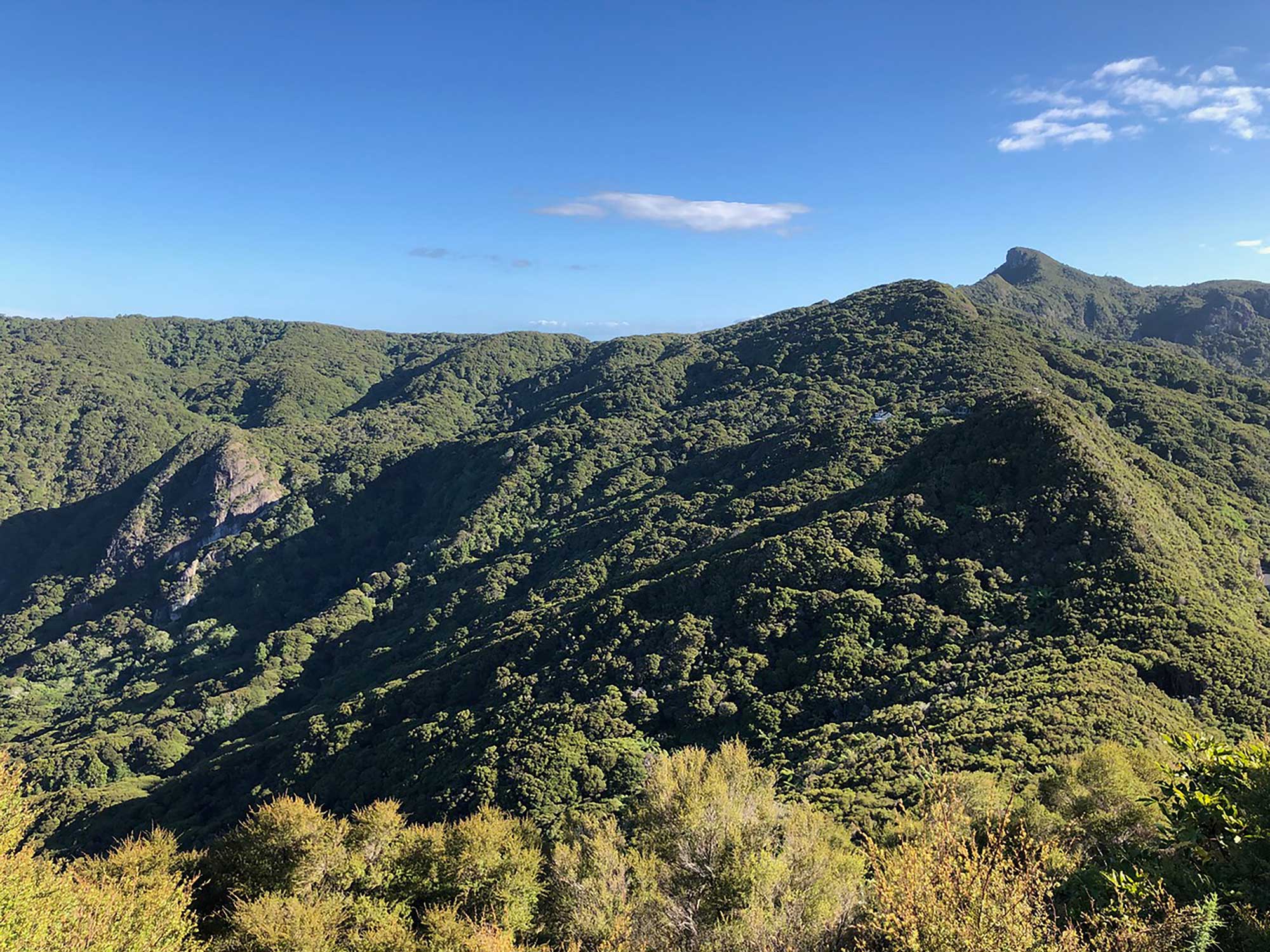
Great Barrier Island’s scenery
Working remotely
Growing up in Brighton, England, Sam moved to Wanaka about 20 years ago, where she met her partner. Over the years, she worked as a mental health nurse in crisis teams and GP practices
in the South Island.
The bubbly brunette acknowledges that she can now do her current job anywhere, as long as she has access to the internet. The family didn’t always have the internet, though, and Sam helped install their network, rather than relying on the island’s sporadic coverage. Technicians came out from Auckland to install a solar-powered microwave link from the Coromandel Peninsula.
Sam laughs. “We helped them dig holes, put concrete in, carry solar panels up the hill.”
However, working remotely has its challenges. If there is no sun to fire up the solar-powered internet, Sam struggles to do her job. A couple of times she has had to let her colleagues know she literally can’t connect that day. To make a phone call, Sam has to head down the road – her closest neighbour lives three kilometres away.
“Cellphone coverage is quite patchy. Really I have to use lots of online tools to make it possible to do my job.”
She admits she would struggle to work on the island during the winter months, when the solar technology can fail. Each winter, though, the family heads to Wanaka to their second home. A keen snowboarder, Sam continues her Melon job from that base, as well as getting up the slopes as often as possible.

Sam’s sons, Ari (left) and Zephyr, are more likely to be out fishing for dinner than playing on digital devices.
Self-sufficient life
On the island, though, she credits technology for allowing her family to keep in touch with the wider world, while also getting the information they need to be virtually self-sufficient. Sam regularly sets and clears 200 rat traps on their property. The island is home to rats, rabbits and other pests.
“We can consult YouTube if we need to work out how to fix a rat trap. That makes life so much easier than it would be even 10 years ago.”
Like most kids, her sons have grown up with digital devices. However, Zephyr and Ari also go off fishing, ride their bikes with friends and go bush bashing. Sam and Nick have to drive 40 minutes to get the mail and fuel at Port Fitzroy, often combining a trip with a fish or surf.
Living on an island away from big-city life sounds idyllic but it can also be challenging, in what Sam describes as “super-aware living”. They grow many of their vegetables – topped up by a box of vegetables and eggs from a co-operative – and catch their own fish. Buying products like bread and yoghurt in bulk, she says: “The kids know they have to savour stuff. Something might have to last the whole week.”
Modern adaptations
“There are logistical challenges of getting stuff in and out of the island. We can’t use a hairdryer or an iron because those things might harm the [solar] battery. We have our mod cons but you have to vacuum during the day and only in good sunlight.”
“When I moved to Wanaka, 20 years ago, we talked about the digital revolution allowing us to live like this. It was perceived as a possibility, but it really has taken that long for us to live this way.”
Out of Asia

Dr Jacqueline Parisi, executive director at Impact Effect, lives between two countries – New Zealand and Southeast Asia
Dr Jacqueline Parisi logs into a video call with a Wellington social enterprise from Koh Chang Island, one of Thailand’s most eastern islands, laden with white sand beaches. While she owns a home in Hawke’s Bay, the 56-year-old Kiwi is likely to be found somewhere in Southeast Asia, where she runs organisational development projects in the international development and aid sector.
Jacqueline loves so many things about Asia – the smells, food, and the buzz of cities like Bangkok, where she has been based. Thanks to technology, she has created a career and lifestyle that allows her to move between her two favourite places – New Zealand and Asia.
First travelling to Asia in her mid-twenties to teach English as a foreign language, it is her sixth stint there. Her base for the next few months is an apartment in Bangkok, which she rents with her husband, Alan Rogerson, a scientist who works for a New Zealand company based in Asia.
“All our belongings back home are in storage,” she smiles.
Technology allows her to do her job, connecting with the projects she continues to help run in New Zealand via her laptop. Technology also allows her to maintain contact with her husband. They have what she calls “a Skype relationship” as Alan is often in Asia when she is back in New Zealand.
“At the moment, we are both in Bangkok together but that’s a very rare occurrence. We very rarely spend more than a week together.”
Jacqueline has spent most of her career in the international development sector, first living in Thailand in 2013 when she worked with a Bangkok social enterprise, Women Organising for Change in Natural Resource Management (WOCAN). After another role in northern Thailand, she developed a model to set up and strengthen social enterprises through her company, Rakata International, and began working on projects.
With two projects on the go at any one time, she is the planning, business development and strategy manager for the Wellington-based Council for International Development, where she logs into weekly meetings via her laptop from wherever she happens to be. Her other role is overseeing a capacity assessment project at the environmental and social enterprise, Kemitraan, in Indonesia.
“If the technology works, it’s beautiful. However, what it does require is accountability that everyone follows the jobs they need to do.”
A great ‘enabler’
Describing technology as “an enabler”, it is thanks to her laptop and online tools that she spent just one week out of eight overseeing a project in Kumming, China, last year.
“The rest of the time I was running things from a distance.”
After a brief break on Koh Chang Island, she was off to Jakarta to see the Kemitraan team. She admits that her transient lifestyle also works because she has no kids.
“That didn’t work out for us. But it does mean that we can have this level of freedom, and this is how we want to live our lives.
“I find so much inspiration working in the area that I do, helping people this way.”
